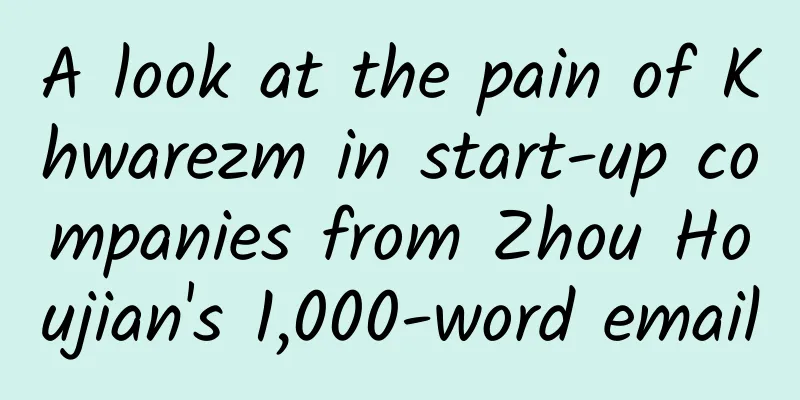The carcinogenic incident is just an external threat. Can new retail help Starbucks solve its internal problems?

|
Recently, the news that Starbucks causes cancer has dominated the WeChat Moments, and the news mainly comes from foreign media reports. In a ruling on March 28, Starbucks was required by a US court to add a "cancer-causing" warning label to its products due to the high content of acrylamide in its products. After the news appeared, Starbucks was pushed to the forefront. Starbucks crisis is coming, but will the innocent be cleared? The "coffee causes cancer" incident will not have a substantial impact on Starbucks. As it turns out, Starbucks did not suffer any losses in this incident. On the contrary, many media and netizens began to support it after the incident. After the incident, Starbucks quickly launched crisis public relations. First, it reported the relevant WeChat account that spread the rumor. Second, it issued a statement to the media. In fact, Starbucks' crisis public relations are similar to the methods used by other brands when they encounter crises, and even less than other brands. At least its official WeChat and Weibo did not issue this statement. However, such simple public relations are paid for by the public. What is the principle behind this? 1. It has to be said that the brand's own credibility is very important. Starbucks's long-standing brand reputation is an important condition for winning the public's trust. Imagine if it is a brand that has repeatedly encountered food safety issues, even if it can prove its innocence every time, the consequences of excessive consumption of public trust will be. 2. The cleverness of Starbucks lies in that it did not proactively express its own attitude, but instead accurately conveyed the message it wanted to express through the association’s statement. The main points that Starbucks wanted to express in the whole incident are actually two points. It is based on these two points that Starbucks' safety crisis was resolved in a short period of time. On the one hand, the coffee sales company involved in this ruling is not only Starbucks, but it is only because of the topicality of Starbucks itself that it has attracted great attention from most media and the public. On the other hand, the public knows whether coffee is healthy or not. Of course, the media's popularization and correction of coffee health issues has also given the public a shot in the arm. To take a step back, even if Starbucks is labeled as a "carcinogen", apart from making people feel uncomfortable, it will not lead to a significant decline in Starbucks coffee sales. This result is somewhat similar to cigarettes. Despite the label of "smoking is harmful to health", consumers will still pay for it. The real crisis comes from within In fact, this "cancer incident" cannot be regarded as a crisis for Starbucks. The real threat to Starbucks' development comes from the defects in Starbucks' own strategy and management model. With the development of commodity economy, the emergence of boutique coffee houses and low-priced coffee such as McDonald's squeezed the living space of Starbucks. China has a vast incremental coffee market. Relevant data show that in 2017, the growth rate of China's coffee market was as high as 15%, and the consumption market size exceeded 100 billion yuan. Relevant institutions predict that since China's coffee market has entered the consumption oriented by social needs, the scale of China's coffee market is expected to reach 300 billion yuan in 2020, and may exceed 1 trillion yuan by 2025. Faced with such tempting "fat meat", everyone wants to take a bite. Foreign brands have begun to enter the Chinese coffee market, with Costa as the main foreign coffee brand sweeping the entire China, and even fast food brands such as McDonald's have joined in, but the former is mainly mid-to-high-end, while the latter is dedicated to serving the low-end market. In addition, domestic local coffee brands are also slowly rising, such as Seesaw, which has attracted many fans for its coffee taste and high-value space design, and Lian Coffee, a new retail brand based on e-commerce operation thinking. China's coffee market is being dominated by a variety of coffee brands, and Starbucks' market space is being severely squeezed. As competition becomes increasingly fierce, Starbucks' future development space may continue to shrink. After all, the increase in new entrants will more or less take away Starbucks' user base. In addition, Starbucks has several major problems. First, the management is not standardized and the cost of the industry chain is too high. In the industry chain, Starbucks' annual expenditure on maintaining daily supply chain operations is as high as $100 million, which is obviously an out-of-control figure. Second, the cup shape has been criticized. Starbucks introduced the concept of large and extra large cups inspired by Italian coffee. As Starbucks developed, its medium, large and extra large cups gradually replaced the traditional large, medium and small cups. But in fact, Starbucks just "stole the concept" and called the actual small cup a medium cup. Third, the expansion speed is too fast. Starbucks has been carrying the gene of crazy expansion since its birth. Between 1998 and 2008, the number of Starbucks coffee shops increased from 1,886 to 16,680. In the few years in China, Starbucks has more than 3,000 stores. Officially, a Starbucks opens in China every 15 hours. Such a crazy expansion speed has led to a decline in coffee quality. In order to improve operational efficiency, Starbucks will inevitably use a quick way to produce coffee, such as high-end espresso machines, which will undoubtedly make Starbucks coffee tainted with the taste of "fast food". Fourth, affected by e-commerce, physical retail is declining around the world. Sales of large supermarkets and department stores such as Walmart, Macy's, and Marks & Spencer have fallen sharply, and a wave of store closures has emerged. The scale of the domestic retail market has also continued to decline. Affected by the overall environment, Starbucks' customer flow is also gradually decreasing. In the midst of crisis, can Starbucks rest assured as it transforms into new retail? The fierce competition in the stock coffee market and its own problems have increased the possibility of Starbucks falling into crisis. In this situation, Starbucks has become more cautious in its strategic layout, and the transformation to new retail is an important move for it. However, can Starbucks really rest easy after the transformation to new retail? This is not the case. First, it is difficult for Starbucks to completely realize the transformation of new retail. According to the current development of Starbucks, its so-called new retail is mainly concentrated in offline stores. It only relies on payment methods to achieve online connection, which cannot be regarded as the real integration of online and offline. The difficulty for Starbucks to achieve a complete transformation lies in the hierarchical needs of consumers. Most people buy coffee to enjoy the romantic, literary, and relaxed atmosphere of coffee shops. If Starbucks adopts new retail models such as convenience stores and takeout to sell coffee, consumers will lose the experience of enjoying the coffee shop atmosphere to a certain extent. Moreover, the reason why consumers are willing to pay for Starbucks' high prices is mostly due to the atmosphere of Starbucks stores. If Starbucks starts taking out and caching, it is really hard to say whether consumers will still accept Starbucks' high prices. In addition, the cost of coffee takeout and caching is relatively high. In order to ensure the taste, the radiation radius of the store is very limited. Opening a large number of stores means that the quality and standards will be difficult to guarantee. Second, Starbucks is overly dependent on third parties during the transformation process. Whether it is the "Say it with Stars" applet or the smart store, Starbucks' new retail is achieved through cooperation with third parties. Starbucks itself does not have a deep understanding of new retail, which also means that Starbucks has handed over the right to transform new retail to third parties. Once Starbucks opens its own Starbucks membership system, if the system is not well integrated with third parties, Starbucks will be in trouble. Third, consumption downgrade has emerged, and the era of the divergence between commodity prices and commodity values is about to pass. As people's income increases, consumption concepts are also changing, and consumption downgrade is coming in full force. The so-called consumption downgrade is not a reflection of the decline in people's quality of life. On the contrary, people are paying more and more attention to returning life to the beauty of simplicity. The rapid rise of brands such as Xiaomi, NetEase Yanxuan, and Pinduoduo is a typical case. Under the trend of consumption downgrade, people's consumption returns to rationality, and consumers will re-examine products with a large difference between commodity value and commodity price. Starbucks, which boasts the label of "luxury" in the coffee industry, will be restricted in its market size. Facing the crisis that Starbucks will encounter after the transformation, where will it go in the future? In fact, by comparing the crises that Starbucks will encounter before and after the transformation, continuing to transform into new retail is the best way for Starbucks to develop at present, but the method needs to be adjusted. Starbucks can accumulate consumers' personal information and consumption data through the application of big data, and use cloud computing and other methods to screen out core users, and gradually accumulate the next batch of heavy coffee consumers who are loyal to the brand. Then, it can carry out corresponding promotions, social fission and other activities for other consumers who are not very loyal to Starbucks, so as to increase consumers' stickiness to the Starbucks brand. In addition to being used to screen users, the accumulation of data and information can also be applied to store location selection, replenishment and other aspects. With the help of new retail high technology, more consumption scenarios can be created to enhance the consumer experience. Anyone who knows about new retail knows that in the domestic market, when talking about new retail, we cannot avoid talking about Alibaba and Tencent. The same is true for Starbucks' new retail. Starbucks can choose mobile payment tools with strong social attributes based on the characteristics of its own products, strengthen the connection with users through payment methods, and guide users to Starbucks physical stores during the interaction with users. It is best to use the channels of the two giants to expand its sales scope and enhance the brand's user stickiness through some activities. In addition to mobile payment tools, Starbucks can also use the latest technologies developed by the two giants in the new retail field to create smart stores with more consumption scenarios and better experience. For example, it can connect Alibaba's digital system to its stores. In addition, Starbucks still needs to master the real core of new retail by constantly understanding and deepening new retail, and during the cooperation with the two giants, it should not hand over what it has without reservation without guarantee. In general, whether it is the cancer-causing scandal or the transformation to new retail, as an industry benchmark in the coffee industry, Starbucks is destined to have a hard life. In this ever-changing era, there will be greater challenges waiting for Starbucks, and if Starbucks wants to go further and more steadily, it must follow the development trend of the times, constantly update itself, and meet the challenges with the best state. As a winner of Toutiao's Qingyun Plan and Baijiahao's Bai+ Plan, the 2019 Baidu Digital Author of the Year, the Baijiahao's Most Popular Author in the Technology Field, the 2019 Sogou Technology and Culture Author, and the 2021 Baijiahao Quarterly Influential Creator, he has won many awards, including the 2013 Sohu Best Industry Media Person, the 2015 China New Media Entrepreneurship Competition Beijing Third Place, the 2015 Guangmang Experience Award, the 2015 China New Media Entrepreneurship Competition Finals Third Place, and the 2018 Baidu Dynamic Annual Powerful Celebrity. |
Recommend
Qiu Ruide: How to modify and improve the content of SEO optimization?
The site hopes to be successful without quality c...
Research and practice of Android unit testing
Introduction to Android Unit Testing Android proj...
"Lice" have coexisted with us for tens of millions of years, so why haven't we seen them in recent years?
When talking about lice, everyone may feel their ...
How to choose promotion channels? Look at these 5 principles and 4 dimensions
Under the epidemic, traffic has shifted online an...
iPad cutout is more powerful than PC. The automatic cutout of iPad version of PS is amazing.
Although Apple claims that the iPad Pro is a prod...
In the live streaming melee, will the five major camps of YY, Yingke, Momo, KK and Douyu be formed soon?
With the rise of internet celebrities such as Pap...
If you want to understand the Romance of the Three Kingdoms, start with Fatty Dong!
What else do you want to read but haven't rea...
The IP derivatives market is booming: is it a blue ocean or a bubble?
IP derivatives have become a new target for enter...
The toilet is one of the key factors in the development of civilization? This popular science article has a bit of "flavor"
A healthy person produces about 0.225 kg of feces...
The battle between the two: a game of efficiency
What is the most essential meaning of competition...
After recovering from Mycoplasma pneumoniae infection, can I get infected again? How long does it take before I can return to school?
When the baby coughs, the parents tremble! "...
iOS development history: from iPhone OS 1.0 to iOS10, finally supports harassment blocking
At the early morning of September 8th, Beijing ti...
4 steps to complete Baidu information flow delivery! Home decoration case sharing~
The home improvement industry is a typical large ...
Don't take cold medicine randomly during flu season! Doctors: These medicines cannot be taken with cold medicine!
Recently, information released by the Chinese Cen...
Nature: The secret of crying? Babies cry → mothers release oxytocin | World Breastfeeding Week
Support breastfeeding and build a beautiful child...









